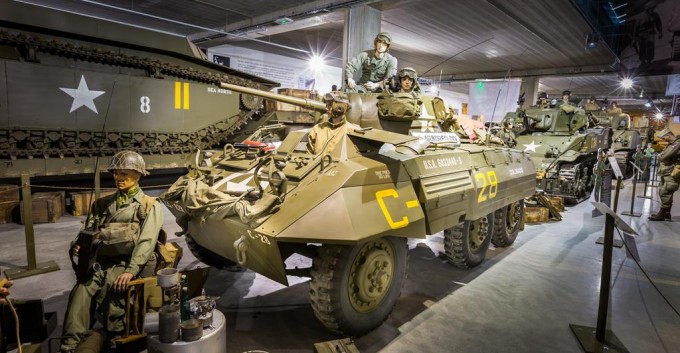Price records were broken last week with the D-Day auction of all contents of the Normandy Tank Museum.
The auction by Artcurial of Paris was a record breaker with sales totaling €3,714,675 (US$4.14 million). Not unexpectedly, tanks took the top spot in sales, followed by a trio of motorcycles which also set world price records. The sale of a Sherman M4A4 tank was the prize lot selling for €364,000 (US$406,121).
Lack of public interest doomed the museum that competed with other excellent museums in the area handling similar items.
Most of the sold inventory was the latest in military technology in 1944.
There is some disappointment in the museum’s disappearance given it showcases much of the technology used by Allied and enemy forces during World War II. All items sold were in excellent working order, as if they had only just rolled off the factory floor.
What seems like a throwback given the technology was the bicycle. Birmingham Small Arms (BSA), manufacturers of motorcycles made for various military uses, also made an inexpensive, lightweight, bicycle that could fold-up which a commando could hold, jump from an airplane and land with, giving the soldier immediate mobility.
The two-wheeled machine outsold the car in over 100 years due to being easily mass produced, economical price, and its usefulness. For those reasons, it performed a major role in conflicts from the latter part of the 19th century until recently. It increased the load a soldier could carry, and in speed quadrupled the distance covered in some situations.
There is a belief the Second World War was highly mechanized. Though many divisions were motorized on both sides, the great majority of supplies and artillery were drawn by horses on the European continent. Horses were used more than bicycles.
Some of the technologies, such as the tank, took longer to come to fruition than others. In the First World War, the British employed 216 tanks in the Third Battle of Ypres, but they had little impact due to soggy ground. Four hundred tanks participated in an engagement in Cambrai (1917). They bulldozed their way through German lines on a seven-mile front. Six hundred tanks decided the battle in the battle at Amiens, New Atlas reported.
Germany made a tank in 1918, but it was too little, too late. But Germany learned from the experience developing the strategy of blitzkrieg that used the tank and air muscle to strike enemy lines, then circle around and attack defenders from the back.
